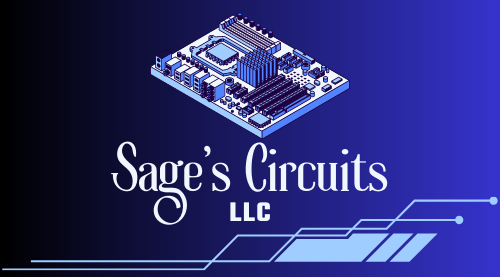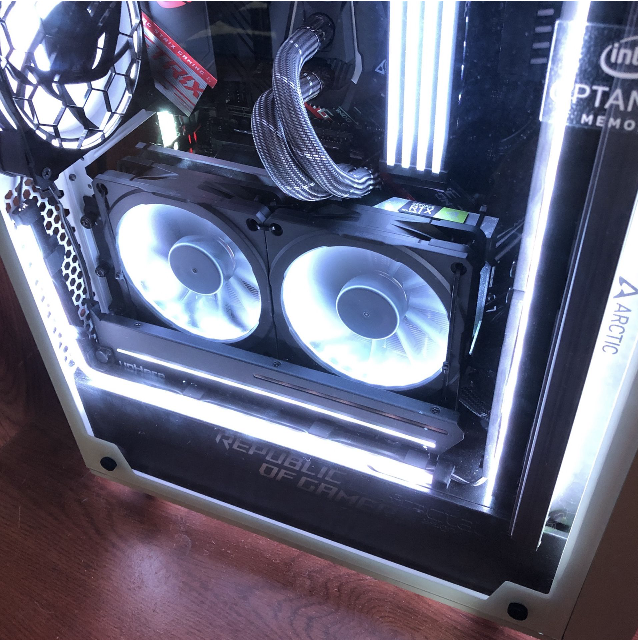If you're interested in computers and what makes them tick, an avid gamer wanting to understand what's under the hood of your new rig, or someone who wants to take a shot at building a PC; this article is for you! More and more computers are deeply involved in our lives, from entertainment to romance and health. Knowing what parts comprise a computer, as well as what those parts do, gives you insight into this expanding technological world.
Here we will go through each component commonly found in every consumer-based computer system, listing out their function and recent advances. Let's dive in!
The brains of the computer is called the central processing unit (or CPU for short). The CPU handles all communication between components within the computer, computes huge amounts of data, and executes or issues all instructions given by the other components. Modern CPUs have multiple 'chiplets' combined onto one PCB to produce extremely high core counts and allow for additional on-board features (such as AI integration).

The nervous system that facilitates the communication between all PC components, connecting them to each other, is called the motherboard (or MB for short). The MB consists of a standard sized PCB, housing the component slots, MB chipset, and all needed internal circuit connections/headers. While older motherboards generally reveal the majority of their circuit connections on the surface, modern motherboards have many more layers and tend to have a sleeker appearance on the surface. This cleaner aesthetic is also due in-part to the recent innovation of migrating many headers to the rear of the MB, allowing for much sleeker cable management.

The overall look, and capability to house certain components, of a PC is mostly determined by the choice of case. Coming in several standardized form-factors and with varying features, such as a tempered glass side-panel or built-in LED display, the PC case houses all components and protects them from the environment around the PC.
Most modern cases include pre-installed case fans, which facilitate the removal of hot air produced by the PC components and intake of fresh air from outside the case. It's good to keep in mind that intake and output should be relatively equal when going for a neutral pressure inside the PC case, which is often the most efficient method for maintaining proper temperatures.

When it comes to cooling components as they heat up during use, the CPU and the graphics card (GPU) are the most critical to keep cool. While most GPUs are still air-cooled, the CPU has moved to often being water-cooled. Water cooling is an effective way to remove waste heat produced by the CPU quickly and quietly, utilizing a radiator with fans attached, hard or soft tubing, and a CPU water-block, to facilitate heat dispersion.

Often the most expensive component, and always the most important in any gaming or graphical design PC, the graphical processing unit (or GPU for short) is the muscle of the machine. Able to perform complex graphical rendering while leaving the CPU free to handle all other computational tasks, it's a must-have for any graphically-heavy workload. Recent advancements in graphical rendering, such as AI upscaling and raytracing, have become mainstream in all modern GPUs; this includes GPUs from all 3 major industry players (Nvidia, AMD, Intel).

For any modern computer system having a strong and reliable internet connection is an absolute must. While nearly all motherboards include built-in internet capability via ethernet and Wi-Fi, external USB adapters and internal PCIE expansion cards can be added to boost performance or add additional functionality (such as newer features or extended range). The current ethernet ports most often range in speed from 1Gbps up to 25Gbps, with Wi-Fi 6E maxing out at just under 10Gbps.

While system components such as the CPU and GPU have continued to improve, growing more powerful with each generation, program and file sizes have also continued to grow year over year. With this growth, having adequate storage space is a necessity. Modern storage drives utilize solid-state components to reach extremely high speeds, up to 12GB/s on a PCIE 5.0 NVME drive. Traditional hard disk drives (HDDs) have taken a back seat to solid state drives (SSDs) over the past decade due to their relatively slow speeds, being primarily utilized in data centers for their ability to reach extremely high storage capacities (over 200TB in some models).

If storage drives are the long-term memory of a PC, RAM is the short-term memory. Where drives store your programs, files, and operating system, RAM stores your temporary files and instructions that are needed repeatedly and quickly during specific tasks. With each restart of the computer, RAM is refreshed and emptied, where drives retain their data even in the event of a loss of power. RAM speeds and capacities have grown quickly with the recent advance to DDR5 (Double Data Rate 5) RAM. Despite these improvements, the standard amount of RAM found in most systems used for gaming or graphical design has been 16GB for over a decade now.

Conclusion
We've gone through all the primary components typically found in computer systems, including the CPU, Motherboard, RAM, Storage, and more. Armed with this knowledge, you're ready to peak inside your computer and fully understand what you're looking at. This can be utilized to your advantage when PC shopping, building a PC, or diagnosing an issue with your current system.
If you're looking for a well-made computer system, whether for gaming or business, checkout our available systems here!

